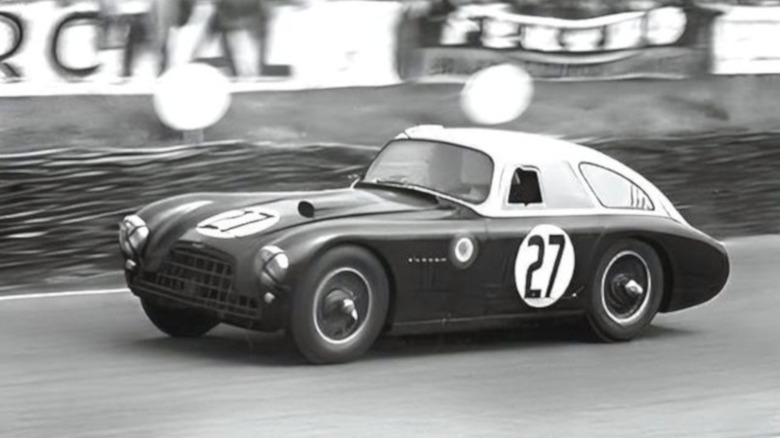
In one form or another, Aston Martin has been around for a long, long time — 112 years, to be exact. In that time, the legendary British automaker has made some of the most iconic vehicles in motor history. From the DB-series to the Vanquish, Vantage, and Lagonda, these fast, powerful rolling sculptures have been a fixture on the world's roads for nearly as long as there have been cars.
Aston Martins have been driven by secret agents, kings, and motorsports enthusiasts all over the world. James Bond made the marque famous internationally with his Q-branch DB5 in Goldfinger way back in the mid-'60s. In 1973, back when he was still just the Prince of Wales, HRH King Charles III became a member of the Aston Martin Owners Club, even owning a unique model that runs on wine and cheese.
While these late-career glow-ups are flashy and important, Aston Martin made its mark on motor history decades before the DB5 was a movie star. In fact, the company has produced some of the most beautiful and rarest race cars to ever come out of Britain. One of the rarest of these is the very limited edition DB3. How rare is it? Let's find out.
Turns out, they're pretty rare! Derived from the previous generation DB2 racer, the DB3 was developed by former Auto Union engineer and designer Robert Eberan von Eberhorst. Between 1951 and 1953, just 10 DB3s were produced with chassis numbers ranging from DB3/1 to DB3/10. Cars 1-5 were all work cars for Aston Martin's in-house teams and cars 6-10 were sold to customers to race as privateers. DB3s were primarily open-cockpit roadsters, but a few cars — including DB3/1 and DB3/7 — were given handsome coupe-style bodies over the years.
When released in 1951, the car was powered by the 2.6-liter, 133 horsepower, Lagonda straight six out of the DB2 mated to a David Brown S527 five-speed manual gearbox. The DB2 mill didn't seem to have the oomph that Aston Martin needed in its new race car, and the 1951 models didn't do well at the track. In '52, Aston dropped a bigger 2.9-liter engine into the car that produced 163 horsepower, but those cars fared only marginally better. These cars took second, third, and fourth place at Silverstone in 1952 in the production sports car class. These same cars all entered Le Mans that year but retired before completion. They did, however, take an overall win at the Goodwood nine hour race. Unfortunately, the car was just too heavy and underpowered compared to its competition, and in 1953 it was replaced by the lighter, faster, more powerful DB3S.
I think it's fair to say that you're not gonna find a DB3 at your local Aston Martin dealer or down at the buy here/pay here lot. As stated earlier, only 10 of these cars were made, and I've only been able to find hard info on four survivors — DB3/1, DB3/4, DB3/5, and DB3/7. As for how much one of these cars would cost you, well, the data on that is even more scarce. As of April 2025, none of these cars are for sale and the last one to go to auction was in 2022. That said, using the power of the internet and some educated guesses, we can probably figure it out.
Back in 2022, chassis DB3/5 — part of the Goodwood Revival Collectors' Motor Cars and Automobilia collection — was offered at auction by Bonhams. It was estimated to sell for between £2,800,000 and £3,300,000 (between $3.7 million and $4.4 million U.S. dollars), but the auction page doesn't say whether or not anyone actually bought it for that much. For as rare as these cars are, and despite their rather checkered racing pedigree, that price seems pretty fair.















